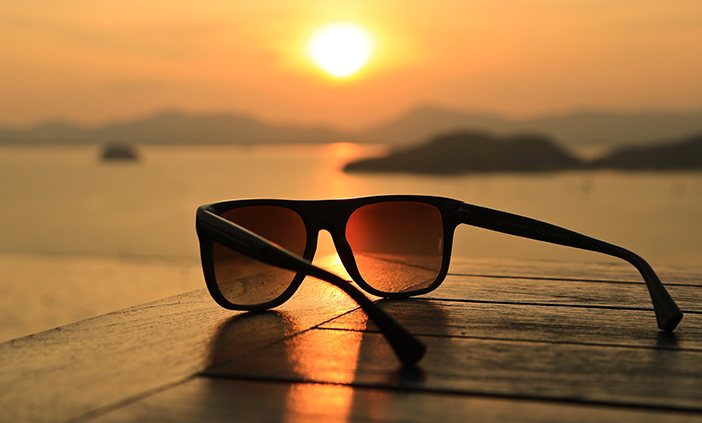

Fashion aside, sunglasses serve an important purpose: protecting eyes from the harmful rays produced by the sun. You’re probably aware of the need to protect your skin from the sun, but it’s equally important to protect your eyes.
Ultraviolet (UV) radiation consists of invisible rays from the sun. The three bands of UV light are: UVA, UVB and UVC. UVC rays are of little concern as they are absorbed by the upper atmosphere and do not reach the earth’s surface.
UVB rays are the ones that burn the skin and can damage the eyes. Combined with cold wind and snow, UVB has the potential to cause snow blindness (photokeratitis), a temporary but painful problem in the cornea of the eye.
Although not all scientists agree, there is some research that suggests that daily exposure to UVB in very bright sunlight over a period of many years may cause cataracts. Experts also suspect that the primary cause of eye growths such as pinguecula or pterygia is exposure to UVB rays.
People with cataracts (or who’ve had cataract or lens replacement surgery), macular degeneration, and retinal dystrophies should be extra careful.
The most important feature to look for in a sunglasses lens is how much UV radiation it absorbs — you want 100% for maximum protection. Look for sunglasses that protect you from 99% to 100% of both UVA and UVB light. This includes those labelled as “UV 400,” which blocks all light rays with wavelengths up to 400 nanometres.
Inferior sunglasses can be more damaging to your eyes than wearing no sunglasses at all. When one wears sunglasses, the pupil widens; if the sunglasses have poor UV protection, then the eyes are damaged more by the sun’s rays.
It is also important to get lenses that are ground rather than punched, to minimise distortion. You may want to consider wraparound sunglasses to prevent harmful UV rays from entering around the frame. Polarised lenses are great for those who spend time on water or drive regularly. The polarisation cuts out the light coming from the horizontal meridian while allowing in the light coming in from the vertical meridian. In other words, it blocks the light that reflects in from water or the highway, reducing glare.
"I am writing this review on behalf of my husband, he has worn glasses since the age of 11, he had cataracts in both eyes. Mr Chitkara removed both cataracts on the same day. After being very apprehensive about this, it was the best decision. His eye sight is the best it has ever been and He no longer need glasses for distance or reading. We would highly recommend Mr Chitkara to anyone considering this surgery, service and patient care was amazing - thank you"
Kay W

We use necessary cookies to make our site work. We'd also like to set analytics cookies that help us make improvements by measuring how you use the site. These will be set only if you accept.
For more detailed information about the cookies we use, see our Cookies page.
Necessary cookies enable core functionality such as security, network management, and accessibility. You may disable these by changing your browser settings, but this may affect how the website functions.